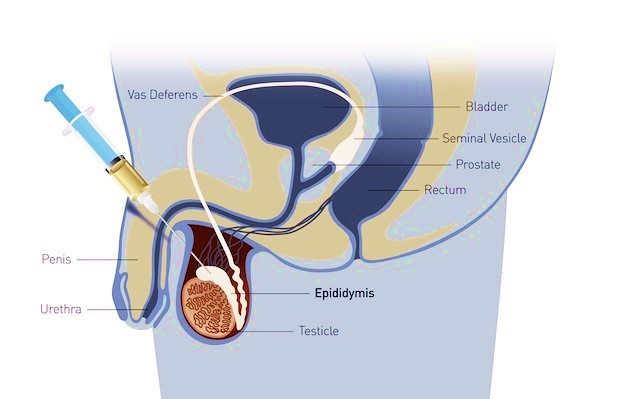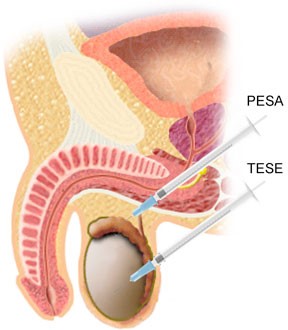PESA and TeSA
The harvesting of sperm by the use of surgical techniques is done for several reasons. Some of these include:
- If a man is unable to ejaculate successfully
- If there is an obstruction present in the tubes that carry the sperm outwards
- A case of a failed Vasectomy reversal
Percutaneous Epididymal Sperm Aspiration (PESA)
If a blockage in the epididymis or congenital absence of the vas deferens (the drainage tube for sperm from the testis to the penis), is the cause for Azoospermia (no sperm in the semen), then this procedure is indicated for obtaining sperm. A very fine needle is inserted into the Epididymis (the sperm collecting tube outside the testis) and sperms are aspirated. This procedure is performed under local anaesthesia, requires no incision, and the patient can get back to work the same day.
Testicular Sperm Aspiration (TeSA)
In some men, the production of sperms in the testis is very low and no sperms are seen in the semen. TeSA is a way of obtaining the few sperms that are available in the testis. Using local anaesthesia, a needle is inserted into the testis to obtain some tissue. This tissue is carefully dissected in the laboratory and the few sperms obtained may be used for ICSI or frozen for later use.
Advanced Male Fertility Checks
A Semen Analysis provides us with information about the physical characteristics of the sperm i.e. sperm count, their motility (swimming strength) and their appearance. However, this examination doesn’t provide any information as to whether the sperm has normal genetic make-up or not. This is where advanced techniques of Sperm DNA fragmentation and checks for abnormal chromosome number (FISH analysis) are used. Sperms that have abnormal genetic make-up result in abnormal embryos and these have a higher risk of not being viable and/or being aborted in-utero. Results from these tests can take upto 14 days but it is vital information, which can assist the doctors in selecting the best infertility procedure which will ensure a successful pregnancy. Got a Query? Ask your questions related to PESA and TeSA treatment. Ask the Doc
